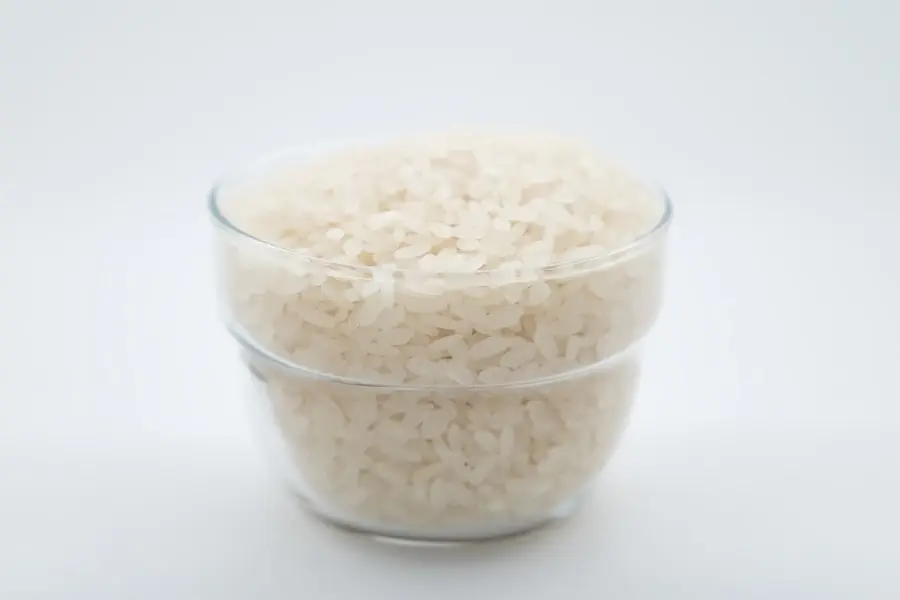Gout is a form of arthritis that occurs when there is a buildup of uric acid in the body, leading to the formation of crystals in the joints. This can cause severe pain, swelling, and redness in the affected joints, most commonly in the big toe. The main cause of gout is an overproduction or underexcretion of uric acid, which can be influenced by genetics, diet, and lifestyle factors. Certain foods high in purines, such as red meat, seafood, and alcohol, can contribute to elevated uric acid levels and trigger gout attacks. Other risk factors for gout include obesity, high blood pressure, diabetes, and kidney disease. It is important for gout sufferers to manage their condition through dietary changes and lifestyle modifications to reduce the frequency and severity of gout attacks.
Gout can be a debilitating condition that significantly impacts a person’s quality of life. The pain and discomfort associated with gout attacks can make it difficult to perform daily activities and can lead to decreased mobility and productivity. In addition to the physical symptoms, gout can also have a negative impact on a person’s mental and emotional well-being. The fear of experiencing another gout attack can cause anxiety and stress, leading to a decreased overall sense of well-being. Therefore, it is crucial for gout sufferers to take proactive steps to manage their condition and reduce the risk of future gout attacks. This includes making dietary changes to lower uric acid levels in the body and prevent the formation of uric acid crystals in the joints.
The Benefits of Brown Rice for Gout Sufferers
Brown rice is a whole grain that is rich in nutrients and can be a beneficial addition to a gout-friendly diet. Unlike refined grains, such as white rice, brown rice contains the bran and germ, which are packed with fiber, vitamins, and minerals. The high fiber content of brown rice can help regulate blood sugar levels and promote digestive health. Additionally, brown rice is a good source of magnesium, which plays a role in reducing inflammation and lowering blood pressure. These properties make brown rice a suitable choice for gout sufferers looking to improve their overall health and manage their condition through dietary changes.
Incorporating brown rice into meals can also help gout sufferers maintain a healthy weight, which is important for managing gout symptoms. Brown rice is a complex carbohydrate that provides sustained energy and can help prevent overeating by promoting feelings of fullness. This can be beneficial for gout sufferers who are trying to lose weight or maintain a healthy weight to reduce the strain on their joints. Furthermore, brown rice is a versatile ingredient that can be used in a variety of dishes, making it easy for gout sufferers to include in their meals and enjoy its health benefits.
How Brown Rice Can Help Reduce Uric Acid Levels
Brown rice can help reduce uric acid levels in the body due to its high fiber content and low purine content. Fiber plays a crucial role in promoting healthy digestion and eliminating waste products from the body, including excess uric acid. By consuming foods high in fiber, such as brown rice, gout sufferers can support their body’s natural detoxification processes and reduce the buildup of uric acid in the bloodstream. Additionally, the low purine content of brown rice makes it a suitable choice for gout sufferers looking to lower their intake of purine-rich foods that can contribute to elevated uric acid levels.
Furthermore, brown rice contains compounds known as phytochemicals, which have been shown to have anti-inflammatory properties. Chronic inflammation is associated with various health conditions, including gout, and can contribute to elevated uric acid levels. By consuming foods with anti-inflammatory properties, such as brown rice, gout sufferers can help reduce inflammation in the body and lower their risk of experiencing gout attacks. Overall, incorporating brown rice into a gout-friendly diet can help gout sufferers manage their condition by reducing uric acid levels and promoting overall health.
Incorporating Brown Rice into a Gout-Friendly Diet
Incorporating brown rice into a gout-friendly diet can be done in various ways to ensure that gout sufferers can enjoy its health benefits while still following dietary guidelines for managing their condition. Brown rice can be used as a base for meals, such as stir-fries, grain bowls, and pilafs, providing a nutritious and filling foundation for a balanced meal. Additionally, brown rice can be used to make dishes such as risottos, stuffed peppers, and casseroles, adding texture and flavor to meals while providing essential nutrients. Gout sufferers can also use brown rice flour as a gluten-free alternative for baking and cooking, allowing them to enjoy their favorite recipes without compromising their dietary needs.
Furthermore, gout sufferers can pair brown rice with other gout-friendly foods, such as vegetables, legumes, lean proteins, and healthy fats, to create well-rounded meals that support their overall health and well-being. By combining brown rice with a variety of nutrient-dense ingredients, gout sufferers can ensure that they are meeting their nutritional needs while managing their condition through dietary changes. Overall, incorporating brown rice into a gout-friendly diet can provide gout sufferers with a versatile and nutritious ingredient that supports their health goals.
Recipes and Meal Ideas Using Brown Rice for Gout Management
There are numerous recipes and meal ideas that gout sufferers can use to incorporate brown rice into their diet while managing their condition. One simple yet delicious recipe is a vegetable stir-fry with brown rice, which combines sautéed vegetables such as bell peppers, broccoli, carrots, and snap peas with cooked brown rice for a flavorful and nutritious meal. Another option is a brown rice salad with mixed greens, cherry tomatoes, cucumbers, and grilled chicken or tofu, dressed with a light vinaigrette for a refreshing and satisfying dish. Gout sufferers can also enjoy stuffed bell peppers with a filling made from brown rice, lean ground turkey or chicken, onions, garlic, and herbs for a hearty and flavorful meal.
For those with a sweet tooth, gout-friendly dessert options using brown rice include coconut milk rice pudding with cinnamon and vanilla or chocolate brown rice pudding made with cocoa powder and honey for a guilt-free treat. These recipes and meal ideas using brown rice provide gout sufferers with delicious and nutritious options for incorporating this whole grain into their diet while managing their condition.
Other Superfoods to Include in a Gout-Friendly Diet
In addition to brown rice, there are several other superfoods that gout sufferers can include in their diet to support their overall health and manage their condition. One such superfood is cherries, which have been shown to help reduce inflammation and lower uric acid levels in the body. Gout sufferers can enjoy fresh cherries as a snack or incorporate them into smoothies, salads, or desserts for their health benefits. Another superfood for gout management is turmeric, which contains curcumin, a compound with powerful anti-inflammatory properties that can help reduce pain and swelling associated with gout attacks.
Furthermore, gout sufferers can benefit from including foods rich in omega-3 fatty acids, such as fatty fish (salmon, mackerel, sardines), flaxseeds, chia seeds, and walnuts in their diet. Omega-3 fatty acids have been shown to have anti-inflammatory effects and can help reduce the risk of gout attacks by lowering inflammation in the body. Additionally, gout sufferers can incorporate leafy greens (spinach, kale), berries (blueberries, strawberries), nuts (almonds, pistachios), and olive oil into their diet for their antioxidant and anti-inflammatory properties. By including these superfoods in their diet along with brown rice, gout sufferers can support their overall health and well-being while managing their condition.
Tips for Managing Gout Symptoms with Dietary Changes
In addition to incorporating specific foods into their diet, there are several tips that gout sufferers can follow to manage their symptoms through dietary changes. One important tip is to stay hydrated by drinking plenty of water throughout the day to help flush out uric acid from the body and prevent dehydration, which can trigger gout attacks. Gout sufferers should also limit their intake of purine-rich foods such as red meat, organ meats, shellfish, and alcohol to reduce the risk of elevated uric acid levels.
Furthermore, gout sufferers should aim to maintain a healthy weight through regular physical activity and portion control to reduce the strain on their joints and lower the risk of gout attacks. It is also important for gout sufferers to monitor their intake of sugar-sweetened beverages and processed foods high in added sugars and unhealthy fats that can contribute to inflammation and weight gain. By following these tips and making dietary changes that include superfoods like brown rice, cherries, turmeric, omega-3 fatty acids, leafy greens, berries, nuts, and olive oil, gout sufferers can effectively manage their symptoms and improve their overall health.
In conclusion, gout is a painful condition caused by elevated uric acid levels in the body that leads to the formation of crystals in the joints. By understanding the causes of gout and making dietary changes that include superfoods like brown rice along with other nutrient-dense ingredients such as cherries, turmeric, omega-3 fatty acids, leafy greens, berries, nuts, and olive oil, gout sufferers can effectively manage their symptoms while supporting their overall health. Incorporating brown rice into meals provides gout sufferers with a versatile ingredient that offers numerous health benefits such as fiber content that helps regulate blood sugar levels and promote digestive health; magnesium content that reduces inflammation; low purine content; anti-inflammatory properties; sustained energy; feelings of fullness; weight management; gluten-free alternative; nutrient-dense ingredient; delicious recipes; meal ideas; superfoods; tips for managing symptoms; dietary changes; hydration; portion control; physical activity; monitoring sugar intake; reducing inflammation; improving overall health; managing symptoms effectively. By following these tips and making dietary changes that include superfoods like brown rice along with other nutrient-dense ingredients such as cherries, turmeric, omega-3 fatty acids, leafy greens, berries, nuts, and olive oil; gout sufferers can effectively manage their symptoms while supporting their overall health.

